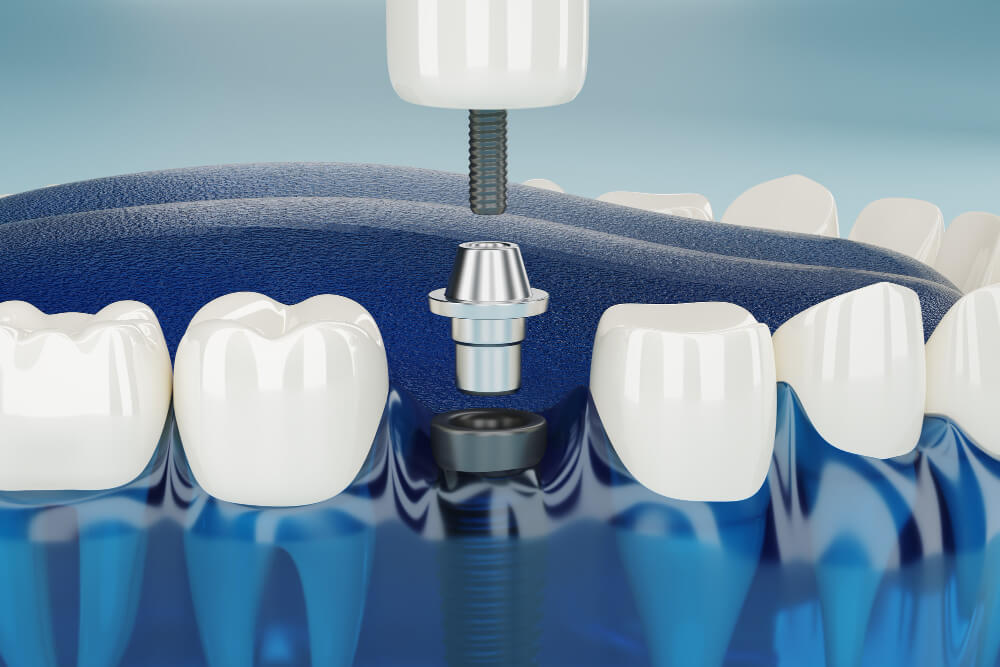- Your cart is empty
- Continue Shopping
Basal Implants
Basal Implants
Basal implants can be placed using the support provided by the malar and zygomatic bones, which are facial bones that are never resorbed, unlike what happens with the alveolar maxillary bone, which is resorbed when teeth are lost.

What are Basal Implants?
Tooth basal implantation is a unique procedure aimed at restoring the dentition, for which it is not necessary to build up bone tissue. Implants are implanted into the basal bone, their shape and size are carefully matched to the characteristics of the dentition.
For Whom Basal Implementation is For ?
Basal implants allow patients not previously implanted due to their anatomical characteristics of some vital structures (near the mandibular nerve, lower maximum sinuses).
The implantation of patients with concomitant diseases such as diabetes, osteoporosis is no longer a contraindication. Basal implants give them hope for great success. The new design of one-piece basal implants and their smooth surface makes the implants resistant to inflammation because bacterial growth is not possible on their surface. Thus, they can be safely placed in smokers or patients with periodontitis, as well as immediately after the tooth has been removed.
How are Basal Implants Different?
Basal implants have significant differences from analogues in the structure and material of manufacture. In appearance, they look like the letter “T” inverted. As for the material, they are made of a soft alloy of titanium, aluminum and vanadium.
The basal implant is screwed into the jawbone, and thanks to the material of manufacture, it fuses with it, fully replacing the natural tooth. The distribution of chewing load occurs evenly, after healing there is no discomfort and inconvenience.

Basal Implants Advantages
- For basal implantation, a minimum of bone tissue is required
- The rod is screwed into the deep layer of the bone
- Implantation in this way is suitable for replacing 3 or more teeth
- Prosthetic teeth after basal implantation, and not after the rods take root in the bone;
- The number of visits before the final result is obtained is minimal.
- The procedure is performed in 3-5 days, and sometimes on the day of tooth extraction.
- The procedure is carried out without accompanying operations;
- The chances of success of the operation reach 98%;
- The procedure is relatively inexpensive.
Disadvantages of Basal Implants
- In the case of extractions of several teeth and roots and the simultaneous introduction of basic implants, a natural narrowing (gingiva) of the gums and later melting of the bone is obtained, which leads to the detachment of certain parts of the structure, which is not optimal from an aesthetic point of view.
- Unilateral muscle strain occurs in patients with unilateral severe trauma or tumor formation of the masticatory muscles. In such cases, it is not preferable to use basal implants due to uneven loading
- In patients using long-term (4-5 years) oral or venous bisphosphonates (particularly those with nitrogen side chains) for the treatment of osteoporosis.

Basal Implantation Stages
This procedure includes the following steps:
Planning
The dentist talks with the patient, examines the oral cavity, conducts a CT scan, models the structure, and also determines the position of the implants. Please note that with computer simulation it is possible to analyze the state of the bone tissue, carry out high and effective detailing and predict the results of the procedure;
Surgical Intervention
Based on the data obtained, after the study, a surgical template is created, on its basis the implant is installed. When removing a tooth, a titanium root is implanted. In this case, local anesthesia is used, the procedure takes no more than an hour;
Installation of an Abutment
Acts as a mandatory connection between the implant and the prosthesis. Almost all basal implants have a one-component design, when the intraosseous and periosteal parts are one
Installation of an Abutment
with that completes the basal implantation, the installation of the new tooth crown – A bridge.
